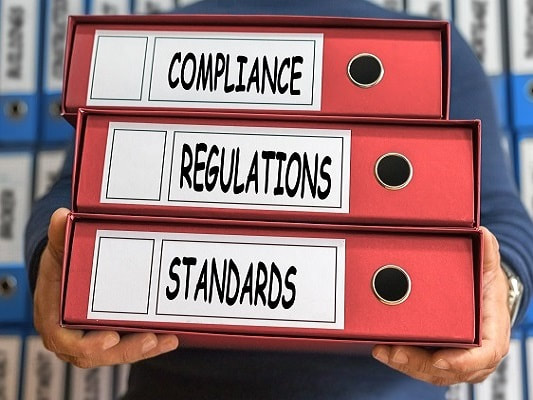 by Amy Kleinschmit, Chief Compliance Officer Organized Retail Crime Recently, I had the opportunity to attend the CUNA/NASCUS BSA school, which I highly recommend for any BSA compliance officers. (If you want to talk more about the school just give me a call.) One of the breakout sessions discussed the growing issue of Organized Retail Crime (ORC). This crime is estimated to generate $69 billion annually! Homeland Security Investigations (HSI) and the Association of Certified Anti-Money Laundering Specialists (ACAMS) worked together to issue a the Detecting and Reporting the Illicit Financial Flows Tied to Organized Theft Groups (OTG) and Organized Retail Crime (ORC) guide, which can be found here. The guide highlights red flags associated with organized theft groups, including structured deposits and withdrawals, large purchases of stored-value cards, high-dollar wire transfers tied to wholesale companies involved with health and beauty supplies, and large purchases of lighter fluid or heat guns, among others. Financial institutions should ensure proper controls are in place to detect and report illicit activities tied to or involving ORC. As explained in the guide, “Illicit proceeds stemming from ORC are laundered through the formal financial sector by both basic money laundering techniques – like structuring bulk cash and interstate funnel accounts, leveraging straw buyers, and account takeovers – and more multifaceted schemes, such as trade-based money laundering (TBML) and complex third-party money laundering (3PML) typologies involving straw buyers, stolen gift cards, front and shell companies, and transnational OTGs.” Part 2 of the guide discusses detecting ORC in more detail, along with providing examples of red flags for the various schemes that these criminals are using. A few of the red flags that the guide identifies illustrate how ORC could be identified through unusual or uncommon patterns of transactions. Please review the guide for additional red flags and guidance.
As concluded in the guide – “As proceeds from ORC have numerous financial touchpoints, it is important that financial institutions increase awareness around retail crime in order to assist law enforcement investigations. ORC is damaging economically and can also be violent, with many people losing their lives during thefts. Financial institutions and law enforcement investigators can use this guide to increase their awareness of suspicious activity tied to ORC to enhance investigations and increase public-private partnership.” NACHA Guidance on Fraud NACHA recently posted guidance for risk-based controls to address the potential of fraudsters gaining access to illicit funds. Nacha's Risk Management Advisory Group recently shared guidance to help identify credit-push fraud. Be sure to review the full article at the preceding link which discusses controls for monitoring incoming transactions, communication and controls on early funds availability. NCUA Updates The NCUA recently released updates to its Credit Union Locator and Research a Credit Union web applications. These applications are now mobile responsive and have updated mapping technology and other new features and enhancements to improve their performance and accessibility. The Credit Union Locator includes additional search options to help users find needed financial products and services, such as bilingual services, financial counseling, and wire transfer services. Other features include a new locate me function, which allows users to access a list of credit unions in their vicinity. Users can hover over a map to access a credit union’s information and get directions to that credit union from their selected location. Users can now easily toggle between Credit Union Locator, Research a Credit Union, and the Credit Union and Corporate Call Report Data Analysis webpage to get financial performance data for a specific credit union or the entire industry. CECL Tools Current Expected Credit Loss (CECL) methodology for estimating the allowance for credit losses becomes effective after December 15, 2022. Listed below are resources available to assist credit unions with CECL compliance. InfoSight recently released a new CECL topic which provides a general overview and aggregates many resources available to credit unions. CU PolicyPro includes two policies plus supporting methodology. These policies would replace Policies 7600 and 7615.
Remember, both InfoSight and CU PolicyPro are dues supported benefits of membership. Please contact Amy Kleinschmit if you have any questions or need help navigating these resources. Comments are closed.
|
The MemoThe Memo is DakCU's newsletter that keeps Want the Memo delivered straight to your inbox?
Archives
July 2024
Categories
All
|
|
Copyright Dakota Credit Union Association. All Rights Reserved.
2005 N Kavaney Dr - Suite 201 | Bismarck, North Dakota 58501 Phone: 800-279-6328 | [email protected] | sitemap | privacy policy |





